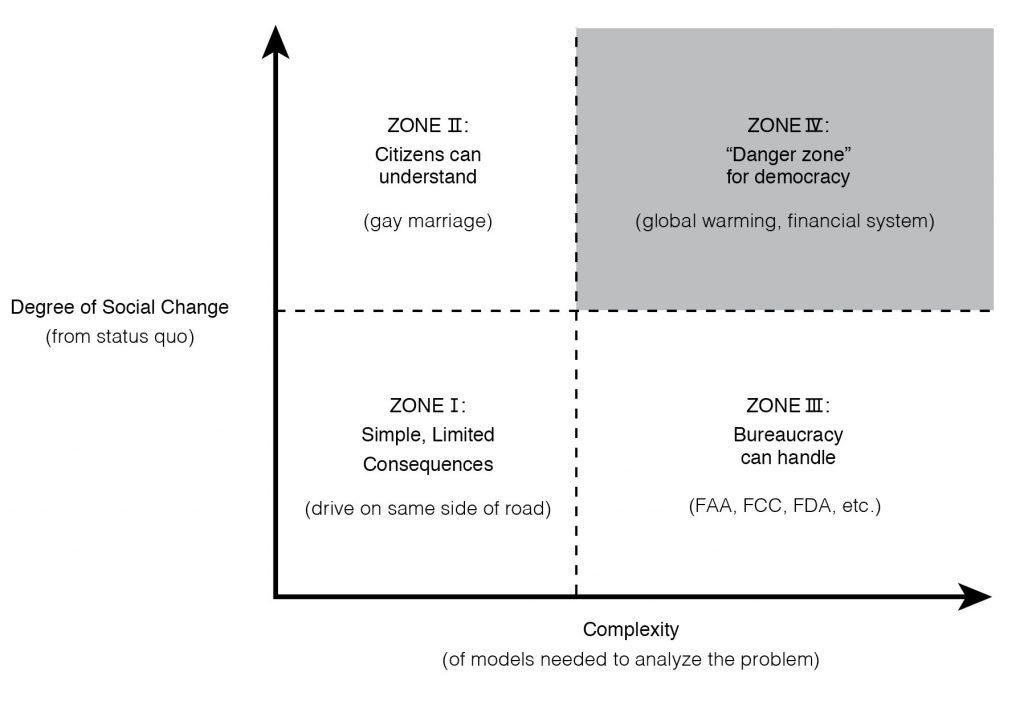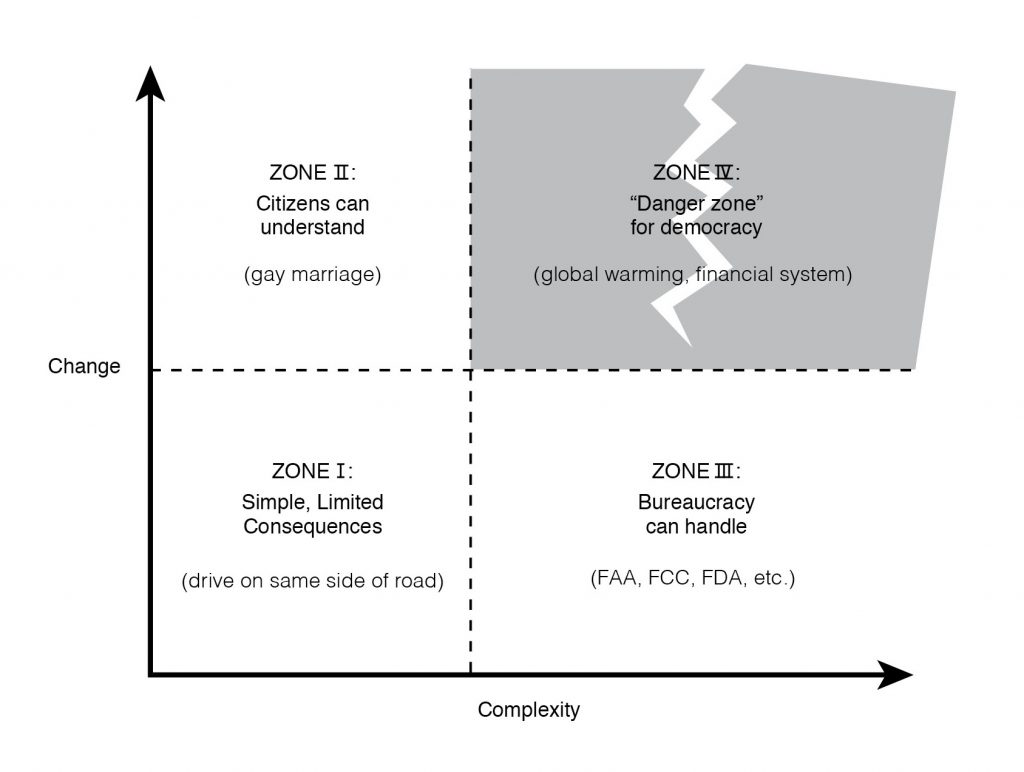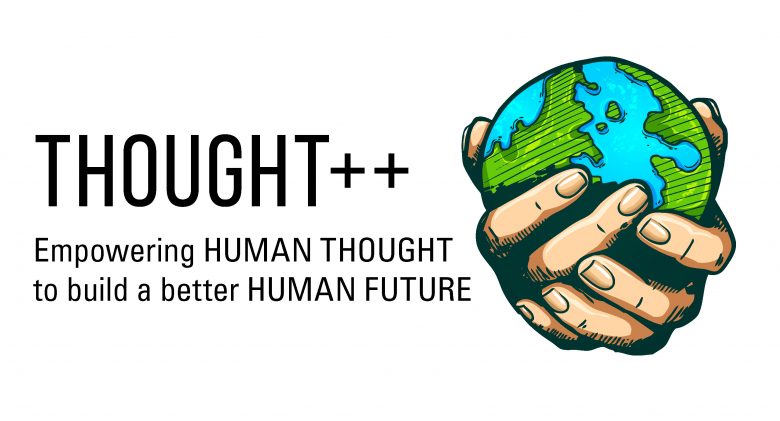Is Human Thought Ready for the Human Future?
After working for years on Thought++, developing new ways to think about complex problems, it’s exciting to start this blog. And it’s wonderful to be here at Caltech as a Visiting Professor, giving my new course on “The World in 2050.”
This class, which just started a few weeks ago, will focus on the cognitive challenges that arise as society tries to address the major problems of the 21st century – among them ecological damage, global warming, resource depletion, artificial intelligence, etc.
Despite the need to cover these sobering topics, I think this class will be fun. Students will pick projects and work to develop their own creative, new ways of addressing some of these key global challenges. And, in the lectures, I’m introducing my own new “theories of thought.” I’m presenting ideas in a way that should help students think more effectively about key decisions in their own lives – about family, and career, and the next stages in their own academic work. I thus continue my lifelong role as mentor and advisor (always a key facet of my career), but I now do so with another new set of tools to offer the students.
As the class examines these global challenges, I’ll keep asking some of my underlying questions about the power and limits of human thought:
“Do we know what we’re doing? Or does our species have trouble formulating ideas that are adequate for handling these global challenges?
Are good ideas – clear, powerful, plausible ways of addressing these problems – perhaps the critical limiting resource for the human future?
And, if so, if thought is the limiting resource, what can we do to help? How can we learn to think more clearly, more creatively? How can we learn to work more effectively?”
During this course at Caltech – and in subsequent posts to this blog – I’ll keep coming back to a simple chart that highlights one of the key challenges for the human future. I’ve set up this diagram by taking some of the problems facing the United States and sorting them into four bins, considering both the complexity of the problem (horizontal axis) and the degree to which an answer will demand some fundamental changes in society (vertical axis).
Stepping through these four zones helps us see the underlying challenge for the United States and perhaps the key question for the human future.

There’s no need to worry about problems in Zone I: Problems like setting out the basic patterns for the flow of traffic on a highway are unlikely to pose any fundamental cognitive challenge or cause any real disruption when addressed.
Problems in Zone II – such as concerns about gay marriage, abortion, family values, etc. – can lead to heated debate. But there’s no need for any advanced studies in systems theory, calculus, or computer science. Everyone makes up his or her mind and votes, and democracy moves along in a haphazard way.
Likewise, we have reasonably good mechanisms for solving problems in Zone III. There are challenges here – such as regulating aircraft or the development of new drugs – that require an agency to have some employees with advanced technical knowledge. But, with this type of problem, most people are willing to let bureaucrats work out the details: Most people are just grateful that planes fly safely, that cell phones work, and that new drugs are tested for safety and efficacy before they get approved.
However, problems in Zone IV – like concerns about global warming, concerns about the stability of the financial system, concerns about healthcare, etc. – present a special challenge for a democratic system. Problems like these are complex enough that they require experts to help analyze the options, yet decisions here will have profound effects on the lives of all citizens.
Everyone seems to wonder: Why trust the experts? How can we know whether they are serving the real needs of society, or whether they’re speaking on behalf of activists, and lobbyists, and other special interest groups? How can we judge a proposed bill in Congress when it’s too long and too complicated for anyone to read? (How, for example, can anyone evaluate the Dodd-Frank Act of 2010 when the bill itself is 848 pages long and now has about 22,000 pages of associated regulatory documents?)
In short: Democracy often gets deadlocked when trying to deal with Zone IV problems, and I sometimes think the diagram should be shown as follows:

Of course, this is discouraging, since most of the problems I’ll discuss in the course fall into Zone IV, and I start to wonder: What are the long-term prospects for the United States, for patterns of democratic governance, if we have difficulty dealing with the challenges of the modern age?
I wouldn’t teach the course if I didn’t have hope, if I didn’t feel ready to offer some suggestions about better ways to orchestrate thought and address Zone IV challenges. But I posed this riddle to my class in the opening lecture, and explained that we’d need time to discuss some of the power and limits of human thought before I could outline my new way of tackling these Zone IV problems.
I’ll get back soon, but – in the meantime – please send an email if you think you can see a general way of addressing this challenge. We need a better way of working together as a society, and we’ll need all the help we can get as we try to build a livable human future.
This post was originally published at carlpabo.com.

Comments are closed.